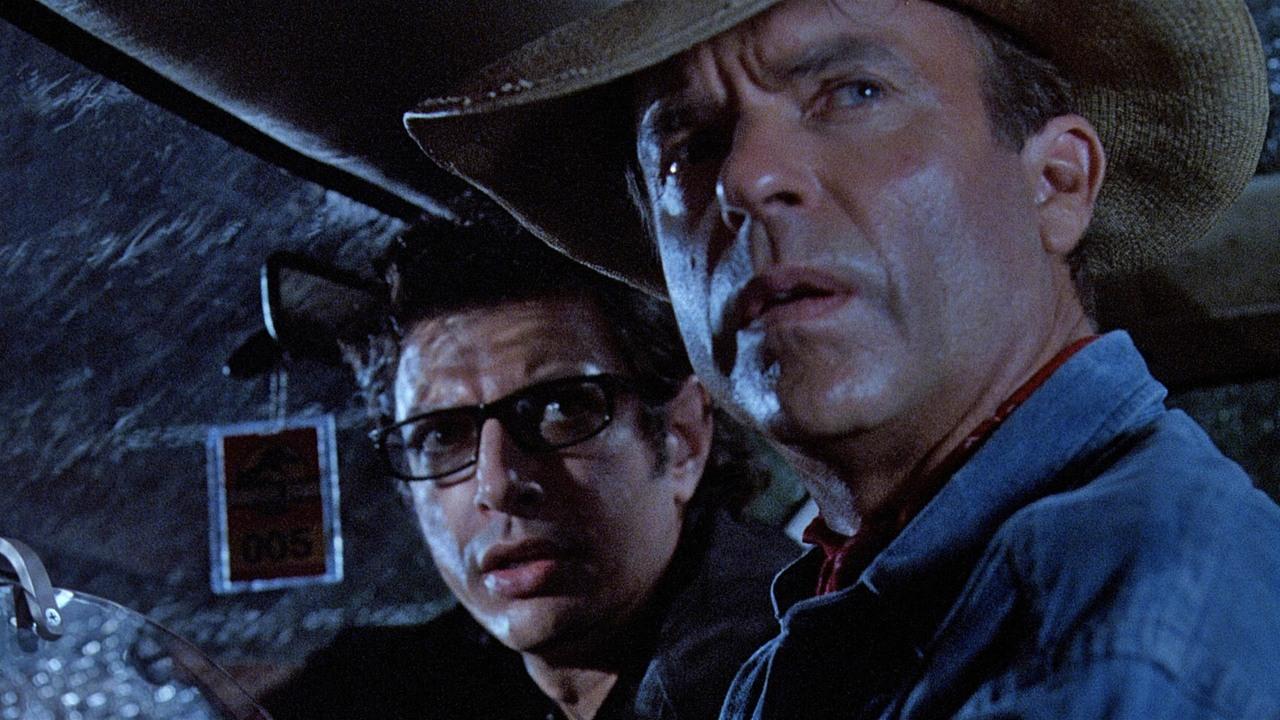Steven Spielberg's classic adventure Jurassic Park turns 25 today, just as the fifth instalment arrives in cinemas.
The original, for many the perfect summer event movie, represented a stunning technical leap forward in 1992, its combination of inspired practical effects from Stan Winston and ground-breaking CGI returning dinosaurs from extinction with terrifying plausibility.
Spielberg - who invented the modern tent-pole blockbuster with Jaws in 1975 and who has repeated the trick many times since with the likes of Close Encounters of the Third Kind (1978), Raiders of the Lost Ark (1981), ET (1982) and this year's Ready Player One - delivered the ultimate cinematic roller-coaster ride, tapping once more into man's primal fear of being pursued by an apex predator with sharp teeth to create an international box office sensation.
The film, based on Michael Crichton's Wellsian 1990 science fiction novel, sees idealistic John Hammond (Richard Attenborough) construct a state-of-the-art safari park on Isla Nublar off Central America to exhibit his genetically-revived prehistoric beasts, developed from a strain of DNA extracted from a mosquito trapped in amber.
Hammond invites palaeontologists Alan Grant (Sam Neill) and Ellie Sattler (Laura Dern) to tour the park among a select group of experts, at which point everything goes comprehensively and catastrophically wrong.
The film remains a firm favourite with anyone who grew up in the early 1990s and with millennials thanks to a GIF of Neill, snatching off his sunglasses in surprise at the sight of a Brachiosaurus grazing in a meadow, which lives on as an all-purpose meme for the expression of disbelief on Twitter.
There are any number of reasons to love Jurassic Park, from John Williams' regal theme to the dinosaurs serving up gory Darwinian justice to the most deserving: notably a cowardly lawyer (Donald Gennaro) devoured on the toilet and grasping Dennis Nedry (Wayne Knight), dispatched after being blinded by a faceful of primordial spit coughed up by a frill-necked Dilophosaurus.
One of the film's less-lauded masterstrokes lies in its highly unusual casting choices.
None of the leads were associated with action roles. New Zealander Neill had appeared in The Omen III (1979) and The Hunt for Red October (1990) but was more likely to turn up in left-field independent fare like Andrzej Zulawski's Possession (1981); Dern was best known for her work with David Lynch; Knight was Newman on Seinfeld (1989-98); while Attenborough was the great British character player known for Brighton Rock (1948), Boulting Brothers comedies and 10 Rillington Place (1971), whose appearance was perhaps intended to carry a reminder of his brother David, the revered BBC naturalist.
But the film's true trump card was arguably Jeff Goldblum as chaos theorist Dr Ian Malcolm.

Goldbum, who recently announced the release of his debut album and is being honoured with his own (long overdue) star on the Hollywood Walk of Fame in Los Angeles next week, is now aged 65 and a beloved figure on the world stage, cherished for his perpetually-amused disposition, purring delivery and sartorial panache.
Although Goldblum made early appearances in Robert Altman's Nashville (1975) and Annie Hall (1977) and has worked steadily in all manner of genres ever since, his status as an American national treasure only really came about with the turn of the millennium as part of the Wes Anderson repertory company, a perfect meeting of minds that began with his turn as villainous oceanographer Alistair Hennessy in The Life Aquatic with Steve Zissou (2004).
Like his regular Anderson co-star Bill Murray, Goldblum's distinctive presence was somewhat taken for granted in the 1990s, when he appeared in a blokier guise advertising Holsten Pils on TV. It took the Texas auteur to cast both men - and others like Angelica Huston, Adrien Brody and Bob Balaban - in a fresh light for their genius to be properly appreciated.

Jurassic Park is perfect example of Goldblum's brilliance. Malcolm is a fully-realised supporting character who's both a convincing send-up of vainglorious showbiz academia and entirely Goldblum himself. The actor is at his most slitheringly seductive, providing light rivalry for the hand of Dr Sattler more to goad Alan Grant for his own amusement than because he's really interested in pursuing her himself. His overtures are more about exercising his own charm than posing serious competition.
Dressed in trademark all-black, including shades and a leather jacket, Malcolm may be a wry showboater but he's also a committed man of science and principled when it matters, staying in the Jeep with Lex (Ariana Richards) and Tim (Joseph Mazello) and risking his life to distract the Tyrannosaurus with a lit flare, albeit haplessly, when the lawyer selfishly runs.
Goldblum deservedly returned to the franchise as its lead in the uneven sequel Jurassic Park: The Lost World (1997) and is back once again in the new venture, Jurassic World: Fallen Kingdom, cameoing to deliver an ominous warning to a government inquiry about natural selection with effortless gravitas.

In between those two appearances, Goldblum has stolen countless other scenes, often in major CGI spectaculars like Independence Day (1996) and Thor: Ragnarok (2017).
Perhaps the actor he ultimately most resembles is the great horror star Vincent Price, whom Goldblum succeeded in the lead role when David Cronenberg remade The Fly in 1986. This latter is arguably Goldblum's greatest achievement, finding real pathos beneath layers of gruesome prosthetics in a tragic allegory about watching a loved one die of a wasting disease, released at the height of the AIDS crisis.
Both men were urbane, cooly intellectual presences, masculine but self-mocking, happy to appear in genre schlock so long as it meant having fun on set.
More importantly, both instinctively understood that, without relatable characters, all the budget and special effects in the world count for nothing.







